Do you have a question about the Electro-Harmonix MICRO Q-TRON and is the answer not in the manual?
Details the function of the DRIVE, Q, MODE, STATUS LED, FOOTSWITCH, and CONNECTIONS controls.
Adjusts filter sweep sensitivity. Higher settings react more to playing dynamics.
Determines filter bandwidth. Higher settings create a narrower, more obvious peak.
Selects frequency range: Low Pass (LP), Band Pass (BP), or High Pass (HP).
Indicates when the Micro Q-Tron is active (lit) or in True Bypass (off).
Toggles the pedal between effect mode and True Bypass modes.
Connects instrument to INPUT and amplifier to AMP jack for signal routing.
Power is activated by plugging into the Input jack. Remove cable when not in use.
Instructions for changing the 9V battery, involving removing bottom screws.
Playing dynamics (attack, volume) control the filter's reaction and effect intensity.
Notes trigger filter sweeps; louder notes result in higher frequency jumps.
Register online or return card. One-year warranty for defects in materials/workmanship.
Contact EHX for RA#, provide problem description, contact info, and receipt copy.
Provides contact details for EHX Customer Service in the US/Canada and Europe.
| Type | Envelope Filter |
|---|---|
| Dimensions | 4.5” x 4.5” x 2.25” |
| Weight | 1.25 lbs. |
| Power | 9VDC |
| Input Impedance | 1M Ohm |
| Output Impedance | 1 kΩ |
| Switch | True Bypass |
| Bypass | True Bypass |
| Power Supply | 9V battery or optional 9V AC adapter |
| Mode Switch | LP, BP, HP |
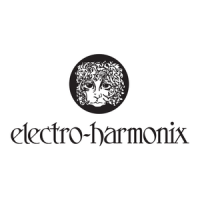
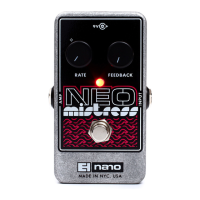
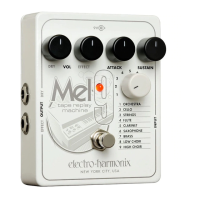
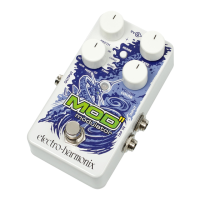
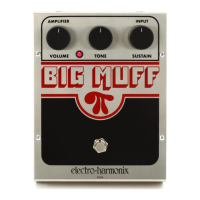
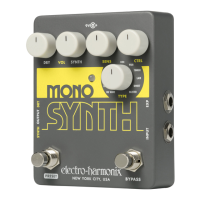
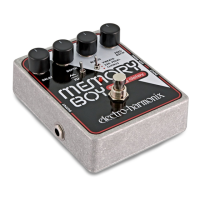
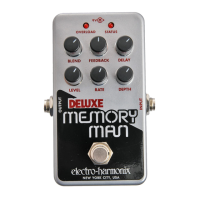
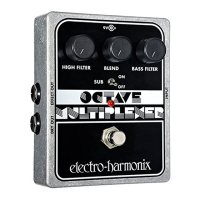
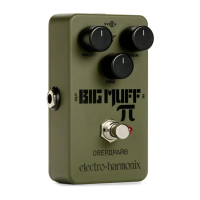
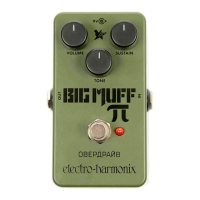
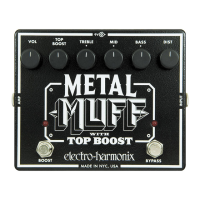
